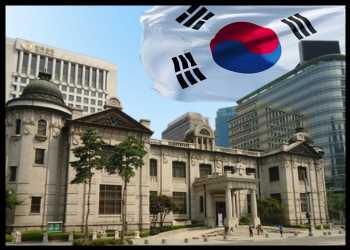The Bank of Korea opted for a smaller rate hike on Thursday, after delivering a record half percentage points increase last month, as downside risks to growth escalates amid high inflation.
The Monetary Policy Board of the Bank of Korea decided to hike the Base Rate by 25 basis points to 2.50 percent from 2.25 percent.
The bank has raised its interest rate by 50 basis points in July for the first time in its history. The rate has been tightened by altogether 200 basis points in the current tightening cycle that began in August 2021.
“The Board sees continued rate hikes as warranted, as inflation is expected to remain high, substantially above the target level, despite the increase in economic downside risks and underlying high uncertainties surrounding domestic and external conditions,” the bank said in the statement.
High inflation and rising interest rates are limiting the recovery in private consumption. The bank observed that accelerated rate hikes in global economies, prolonged Ukraine crisis and sustained zero-COVID policy in China as major downside risks to growth.
The central bank has downgraded its growth outlook for this year to 2.6 percent from 2.7 percent projected in May. Similarly, the forecast for 2023 was lowered to 2.1 percent from 2.4 percent as exports are set to weaken due to the global economic slowdown.
Citing continued demand pressure followed by the lifting of social distancing and rising agricultural prices, the BoK raised its inflation outlook for 2022 to 5.2 percent from 4.5 percent. Inflation is seen at 3.7 percent next year, up from the prior forecast of 2.9 percent.
While the BoK’s tightening cycle has a little further to run in the near term, it is likely to turn more dovish later in the year as growth slows and inflation drops back, Gareth Leather, an economist at Capital Economics, said.
The central bank is likely to bring its tightening cycle to a finish by the end of the year and start cutting rates in 2023, the economist added.
Source: Read Full Article
-
Trapped: The growing cash pile in Moscow that investors can’t touch
-
German Factory Orders Recover; Construction Shrinks Sharply
-
Hikma Pharma H1 Profit Down, Revenues Up; Lifts FY23 Forecast For Generics
-
IAG Swings To Profit In FY22
-
U.S. Existing Home Sales Extend Nosedive To New Two-Year Low In July

